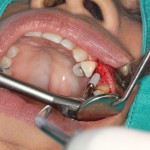
The use of dental implants is increasing and small diameter implants are being seen as having potential to restore small edentulous spans without the need for bone augmentation. The aim of this review was to compare the survival rates of narrow diameter to standard or wide diameter implants
Searches were conducted in the PubMed, Medline, and Cochrane CENTRAL databases with additional hand searches of relevant dental journals. Prospective clinical trials reporting success/survival rates of more than 10 implants with a minimum of 12 months follow up were included. Retrospective studies were excluded. Study quality was assessed using the Newcastle-Ottawa scale (NOS). Failure rates by year were computed dividing the number of failures by the total exposure time of implants (TET). Total exposure time was computed as the product of the number of implants by the length of the follow-up period in years.
- 16 studies (3291 implants, 1470 patients) were included.
- Seven studies used narrow implants (<3.3 mm), the rest standard implants (≥3.3mm) with average follow-up time of 3.26 and 4.04 years, respectively.
- Overall 100 out of 3291 implants were reported as failed.
- Failures were 3.92 times more frequent in narrow than in regular implants.
- Failure ratio rate (FRR) was 1.93 and 1.42 times more frequent in dual-acid and sand blasted acid etched implants, respectively.
- FRR in mandible was 4.95 times more frequent than in the maxilla.
- Implants restored and loaded at ≤ 3 months post placement had 4.42 times more failure rate compared to those loaded at ≥ 3 months.
- Random-effects Poisson regression estimates of failure rates based on 14 studies were 1.21% and 0.34%, respectively for narrow and standard implants (z=-4.51, p<0.001, 95% CI [0.62% 1.24%]).
- Poisson regression estimates of the five years failure rates were 0.51% and 1.64%, respectively for standard and narrow implants (z=-3.49, p<0.001, 95% CI [0.69% 1.86%]).
The authors concluded.
According to this meta-analysis, implant survival rates were calculated to be 75% and 87% for <3mm and ≥3mm diameter implants, respectively. Therefore, only implants with diameter ≥3mm were suitable for rehabilitation of narrow edentulous spaces. It is also important to bear in mind that for narrow implants (diameter <3mm), functional loading at 3 months post implant placement is crucial to obtain higher survival rates.
Comment
While all the studies included in this review are prospective only one is listed as a randomised controlled trial (RCT). The finding of increased failure rate with early loading differs from those reported in the 2013 Cochrane review by Esposito et al ( Dental Elf 10th April 2013) which included 6 RCT comparing early and conventional loading of implants and found insufficient evidence of a difference.
Links
Ortega-Oller I, Suarez F, Galindo-Moreno P, Torrecillas-Martínez L, Monje A, Catena A, Wang HL. The Influence of Implant Diameter Upon its Survival: A Meta-Analysis Based on Prospective Clinical Trials. J Periodontol. 2013 Aug 1. [Epub ahead of print] PubMed PMID: 23905841
